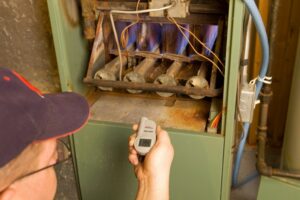
Gas furnaces are a powerful and energy-efficient way to heat a home. We’re familiar with the the usefulness of a gas furnace in Tofino, BC for a household, and we never want to discourage people from looking into installing a natural gas furnace.
But any gas-burning appliance comes with some level of safety risk. Not a large risk, because otherwise these appliances would never receive approval for home use. It’s important, however, for consumers to know about ways any gas appliance could become hazardous, how best to avoid them, and what to do if problems develop.
In that vein, today we’ll examine one of the ways a natural gas furnace can become hazardous: a cracked heat exchanger.
What you need to know about the heat exchanger
The component in a furnace responsible for transferring the heat from the combustion gases coming from the burners to the air moving through the furnace and into the rooms of the house is called the heat exchanger. If you look into the interior of a gas furnace, you’ll recognize the heat exchanger as a series of metal chambers over the burners.
When a gas furnace is running, the hot combustion gases from the burners move into the heat exchanger, and their heat causes the metal walls of the chamber to become extremely hot. The air from the blower fan moves around the heat exchanger and picks up heat from the walls. Once the heating process completes, the cooled gas byproducts in the heat exchanger (which includes carbon monoxide) escapes from the furnace and the house through a flue. This process prevents the combustion gases from coming into contact with the air moving through the HVAC system while still transferring their heat.
How cracks in the heat exchanger create hazards
A small crack on the surface of a heat exchanger may not seem like a problem. But because the metal of the exchanger expands as it heats up, a crack can stretch open enough to allow the gases inside to escape into the air. This creates the possibility of harmful combustion gases, principally CO, getting into the living spaces and endangering people.
Cracks are most likely to occur in older furnaces when corrosion sets in. Corrosion on the heat exchanger weakens the metal, making it easier for cracks to start. Corrosion can also happen in a furnace that isn’t venting combustion gases properly.
Preventing heat exchanger cracks hazards
This might sound scary, but avoiding heat exchanger cracks and their dangers is not difficult if you know the steps to take. The most important step is to always schedule an annual inspection and tune-up for your furnace with professionals.
It’s a part of our job as technicians to look for signs of cracks on the heat exchanger and perform a combustion test. We can catch troubles early so you can schedule the repair work you need. In the case of older furnaces (15 years or more) a cracked heat exchanger often means it’s time to replace the heater. Another important step is to make sure you have CO detectors in your home as an early warning in case of leaks through heat exchanger cracks.
Temprite Climate Solutions Serves Courtenay, BC and the Surrounding Areas. For a job done right, call Temprite!
